The Taipei Cultural Assets Review Committee has designated the National Palace Museum building a historic building, but not a historic site.
A coalition of museum employees and nearby residents had petitioned the city to recognize the building as a historic site, citing that the younger Chiang Kai-shek Memorial Hall had been classified as such.
The museum, built in 1962, is more representative of the nation and is more historically significant than the memorial hall, and should receive the special designation, the coalition had argued.
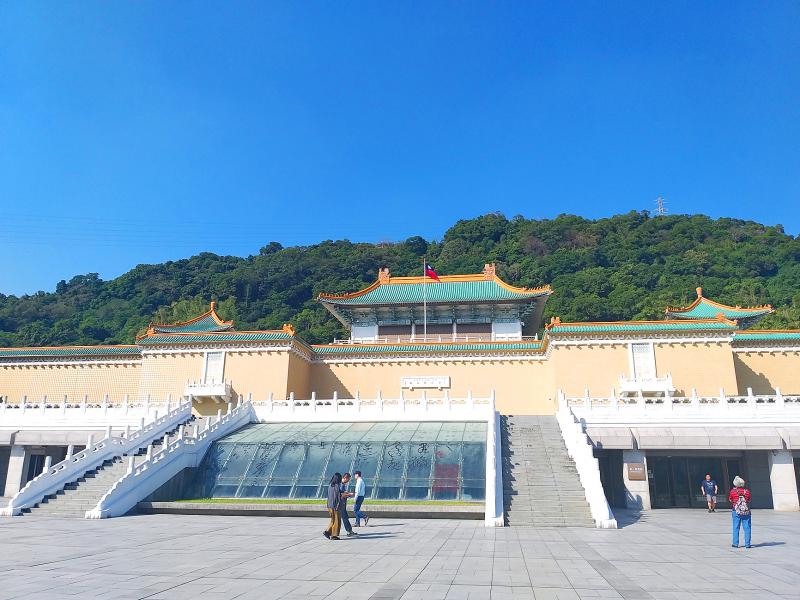
Photo: Chen Yu-hsun, Taipei Times
However, the committee on Monday reached a different conclusion.
The memorial hall’s classification was based on designer Wang Ta-hung’s (王大閎) injection of a “modern feel” into classic architecture, which was a remarkable achievement in an era of authoritarianism, committee member Hsueh Chin-shou (薛琴受) said.
National Palace Museum designer Huang Pao-yu (黃寶瑜) also brought a modern aesthetic to a traditional form of architecture, but the execution lacked the spirit found in Wang’s work, she added.
“Huang duplicated the traditional vocabulary. Simply put: His work is reminiscent of the authoritarian era. He did exactly what [former president] Chiang Kai-shek (蔣介石) asked of him,” Hsueh said.
A historic site designation would not give the museum higher importance and only result in the building being more strictly managed, committee member Chiu Ju-hua (丘如華) said.
Any changes to its exhibition space would have to be reported, and it would be restricted in doing modifications, she added.
Coalition member Sung Hou-ling (宋后玲) said that classifying the museum as a historic site would help guarantee its protection.
She asked whether there were political considerations at play, impeding the museum’s classification as historic site.
People’s Front for Democracy director Chou Chia-chun (周佳君) said that the memorial hall had been designated a historic site due to political manipulation during the authoritarian era.
The movement to classify the museum as a historic site was a civic one, and not politically motivated, he said.
The museum’s main hall had already been registered as a historic building, but its other buildings — including the administration buildings, storehouse and workers’ dorms — were never registered, the committee said.
The committee had previously discussed canceling the museum’s status as a cultural site, but cultural preservationist Hsiao Wen-chieh (蕭文杰) urged the committee not to do so, saying that land developers would surround the museum with high rises, destroying the view.
The coalition said the museum’s property was of historic importance as it was the site of a gathering of distinguished academics hosted by late former museum deputy director Chuang Yan (莊嚴), as well as the site of a stone inscription from the Japanese colonial period.
The committee said that the meeting and the inscription occurred on private property and not on the museum’s grounds, adding that it is to further discuss the scope of the area covered by the museum’s cultural site classification.
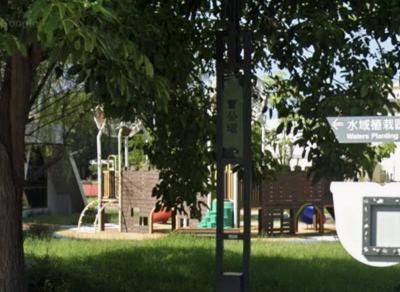
A 72-year-old man in Kaohsiung was sentenced to 40 days in jail after he was found having sex with a 67-year-old woman under a slide in a public park on Sunday afternoon. At 3pm on Sunday, a mother surnamed Liang (梁) was with her child at a neighborhood park when they found the man, surnamed Tsai (蔡), and woman, surnamed Huang (黃), underneath the slide. Liang took her child away from the scene, took photographs of the two and called the police, who arrived and arrested the couple. During questioning, Tsai told police that he had met Huang that day and offered to
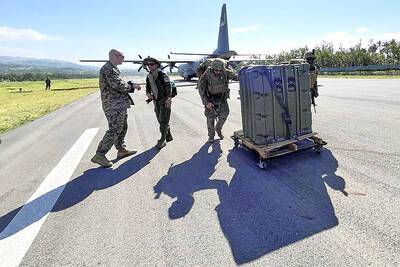
LOOKING NORTH: The base would enhance the military’s awareness of activities in the Bashi Channel, which China Coast Guard ships have been frequenting, an expert said The Philippine Navy on Thursday last week inaugurated a forward operating base in the country’s northern most province of Batanes, which at 185km from Taiwan would be strategically important in a military conflict in the Taiwan Strait. The Philippine Daily Inquirer quoted Northern Luzon Command Commander Lieutenant General Fernyl Buca as saying that the base in Mahatao would bolster the country’s northern defenses and response capabilities. The base is also a response to the “irregular presence this month of armed” of China Coast Guard vessels frequenting the Bashi Channel in the Luzon Strait just south of Taiwan, the paper reported, citing a
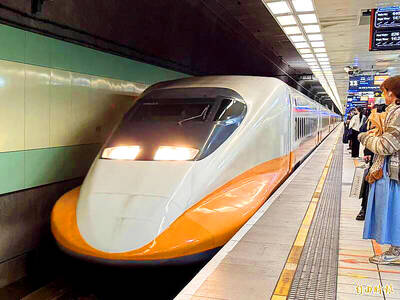
BETTER SERVICE QUALITY: From Nov. 10, tickets with reserved seats would only be valid for the date, train and route specified on the ticket, THSRC said Starting on Nov. 10, high-speed rail passengers with reserved seats would be required to exchange their tickets to board an earlier train. Passengers with reserved seats on a specific train are currently allowed to board earlier trains on the same day and sit in non-reserved cars, but as this is happening increasingly often, and affecting quality of travel and ticket sales, Taiwan High-Speed Rail Corp (THSRC) announced that it would be canceling the policy on Nov. 10. It is one of several new measures launched by THSRC chairman Shih Che (史哲) to improve the quality of service, it said. The company also said
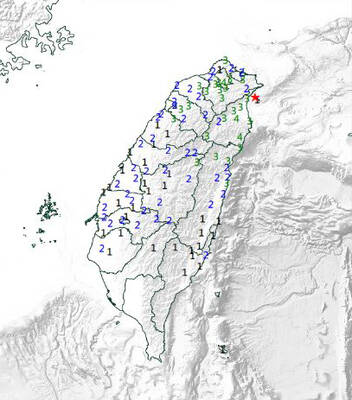
A magnitude 6 earthquake last night at 9:11pm struck off northeastern Yilan County, the Central Weather Administration (CWA) said. The earthquake’s epicenter was located in waters between Toucheng Township (頭城) and Turtle Island (Gueishan Island, 龜山島), about 22.1km northeast of Yilan County Hall at a depth of 112km, CWA data showed. There were no immediate reports of damage. The earthquake’s intensity, which gauges the actual effects of a temblor, was highest in Yilan’s Dongshan (冬山) and Nanao (南澳) townships and Taipei’s Xinyi District (信義), where it measured 4 on Taiwan’s seven-tier intensity scale. It measured 3 in other areas of Yilan and Taipei, as